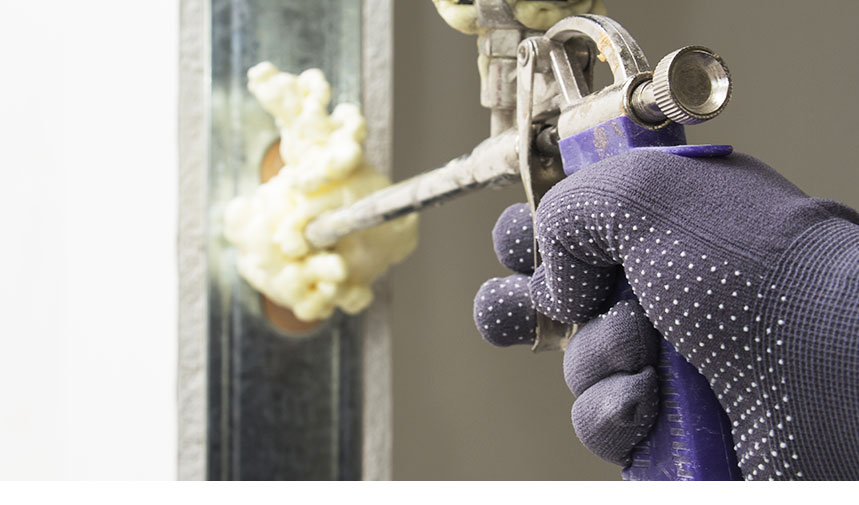Every year, homes across America are damaged by storm events including tornadoes, hurricanes, blizzards and other disasters. A new product is able to provide homeowners not only with simple repairs but with a stronger, more energy efficient home that is better able to offer weather resiliency, strength and comfort. The product is known colloquially as “spray foam insulation” and by construction professionals as closed-cell spray polyurethane foam (ccSPF) insulation. This home repair solution is the only flood damage-resistant insulation material according to the U.S. Federal Management Emergency Agency (FEMA), earning FEMA’s highest rating for water resistance. Spray foam insulation also provides wind resistance for roofs and significantly increases the rigidity and strength of walls.
Spray Foam Insulation Chemistry 101
Here’s how the chemistry works: a two-component mixture of isocyanate and polyol resin comes together at the tip of an application gun, forming an expanding foam that can insulate new builds, renovations, repairs and retrofits. The resulting material, when cured, serves as an air barrier and thermal barrier all in one, with the closed cell foam insulation serving as a moisture barrier as well.Closed-cell foam differs from its chemical cousin, open-cell foam, in that it is a high-density product that becomes hard and durable when cured. Common applications of closed-cell spray foam insulation including roofing and wall insulation as well as a factor in engineering solutions for foundations, buildings, roadways and concrete repair.

Understanding R-value
Demand for spray foam insulation has been rising in recent years as municipalities modify their building codes to allow for its use in storm repairs, renovations and other applications for a high-performing, environmentally friendly product.Construction professionals use the term “R-value” to indicate an insulation product’s thermal resistance to heat flow. The higher the R-value of a product, the more effective its insulation properties.
In the case of closed-cell spray foam, the product is close to R-7 per inch, meaning it is very effective at blocking conductive heat transfer, radiant heat transfer, and convective heat transfer. As an alternative to traditional insulation materials such as concrete, glass and fiberglass, closed-cell spray foam insulation is much more effective at providing thermal insulation and minimizing air infiltration.
A Great Product for Storm Repair, Renovations and Recovery
In cases where homes have been damaged by storms, wind or other weather events, the installation of spray roam installation can be boosted with a new application technique. The United States has adapted to using spray foam insulation and a new technology known as “wall injection” to retrofit existing wall construction by drilling small holes between wall studs in a home’s framing and filling the void with an aggressive expanding foam.
By creating a thermal envelope in the existing structure, homeowners are better able to conserve energy, as well as having a more solid wall. Spray foam insulation will last the lifetime of the structure because it does not break down. Studies by the U.S. Department of Energy show that 40 percent of a home’s energy is lost via air infiltration through walls, doorways and windows.

However, buildings treated with closed-cell spray foam insulation insulate as much as 50 percent better than traditional insulation materials. Other benefits of spray foam insulation include providing a barrier against pollen, dust and insects, and minimizing airborne sound transmission.A number of factors determine the price of spray foam insulation, but as a general rule, spray foam insulation is about twice as expensive as traditional fiberglass insulation. However, the cost will vary depending on the size of the job, the type of foam being installed, the extraction of existing insulation, and local building codes.